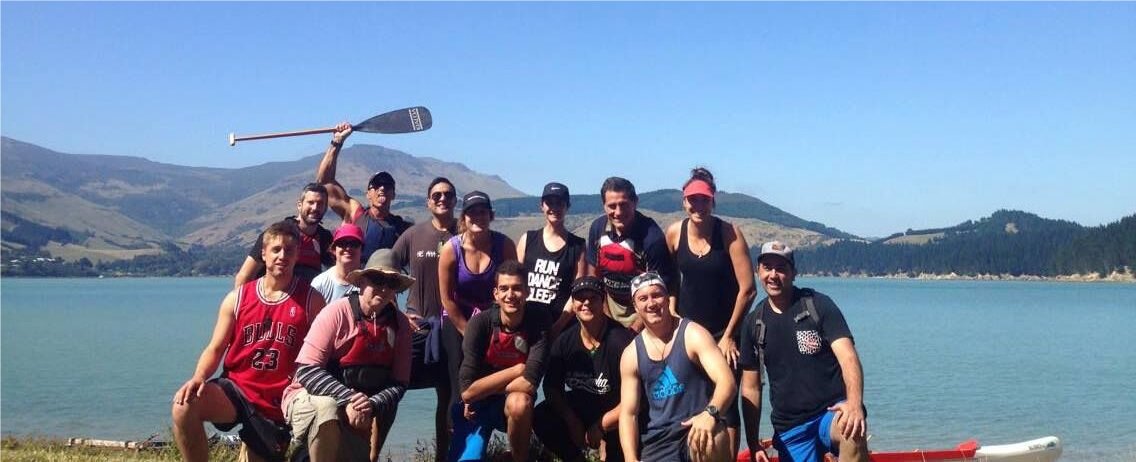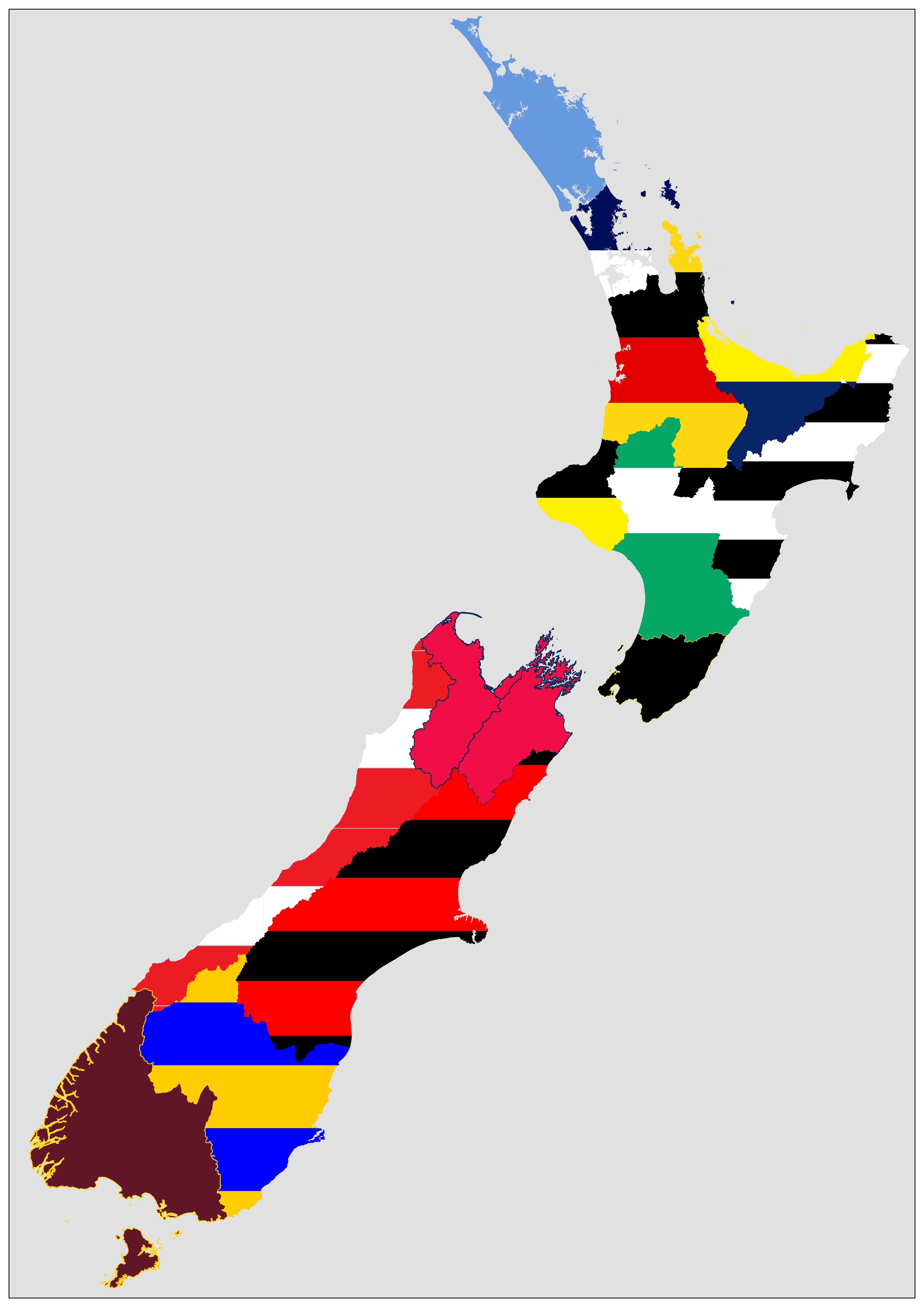- Home
- :
- All Communities
- :
- User Groups
- :
- Conservation GIS
- :
- Documents
- :
- Sean Bragg, New Zealand
- Subscribe to RSS Feed
- Mark as New
- Mark as Read
- Bookmark
- Subscribe
- Printer Friendly Page
Sean Bragg, New Zealand
Sean Bragg, New Zealand
Navigation: 2018 Scholar Project ReferenceProject CommunitiesPage ConservationGIS Scgis.org
Sean Stephen Karia Bragg, GIS Assistant, Te Rūnanga o Ngāi Tahu, (TRoNT) NEW ZEALAND

15 Show Place, Christchurch, New Zealand
Website:http://ngaitahu.iwi.nz/
email: sean.bragg@ngaitahu.iwi.nz,seanbragg@outlook.com
xIndigenousKnowledge xTribalSovereignty xCommunity xCultural x2018Scholar x2018Talk xScholar xTalk xNewZealand xPacific
*-ORGANIZATION’S WORK:
Te Rūnanga o Ngāi Tahu (TRoNT) is an iwi/tribal organization that exists for the 60,000 (and growing) registered Ngāi Tahu tribal members. TRoNT was established in 1996 to formally receive and manage a Treaty Settlement and continues today to protect and advance the collective interests of Ngāi Tahu iwi members. TRoNT is a non-government organization and a registered charity in New Zealand. All Ngāi Tahu tribal members are bound by whakapapa (genealogical ties). Traditionally, Ngāi Tahu were spread across the majority of New Zealand’s South Island, however today Ngāi Tahu members are spread far and wide.
TRoNT is guided by a whakatauki (proverb) ‘Mō tātou, ā, mō kā uri, ā muri ake nei – for us and our children after us. TRoNT is all about protecting the current rights and interests of all tribal members and uplifting the aspirations of the people – both now and for future generations.
Much of the work at TRoNT is similar to that of other indigenous organizations, such as the First Nations people of Canada. Ngāi Tahu has regular contact and programs working together with the First Nations people of Canada. We have many shared goals and interests on behalf of our respective tribes so it makes sense to work together or at least understand how one another operates. I would relish the opportunity to potentially meet and work with other First Nations/Indigenous people and to exchange knowledge, ideas and experiences and how we can use GIS to make a difference for our people. For more information about Ngāi Tahu and TRoNT feel free to check out the Ngāi Tahu website: http://ngaitahu.iwi.nz/.

I have worked for TRoNT since June 2015, first in my role as an intern and more recently in my role as GIS Assistant. Although it’s a junior position, I have a wide scope of work and I get the opportunity to assist in the many needs of the organization and its people. I have the opportunity to constantly up-skill and then use my skills to assist in the achievement of the organization’s goals. I have been involved in creating a number of conservation maps, including freshwater, tribal boundaries and conservation maps. As an organisation we use ArcGIS Online to create a varying range of WebViewer/WebApps with examples I have worked on including Emergency Response Maps, Archaeological finds maps and Hauora (health services) maps.
Example outlining a draft version of our Emergency Response Web App, created on ArcGIS online
Working for this organization helped me to discover GIS and its many applications. It is now something I am very passionate about and I enjoy working and learning in this space immensely. I was particularly proud to be a part of the team that helped launch the Ngāi Tahu cultural mapping website (kahurumanu.co.nz) in 2017. This is a project that will continue to grow and be further developed over time.
Being a registered Ngāi Tahu tribal member myself and feeling a strong personal connection to the people, land and history here in New Zealand makes my connection with the organization and pride in my work all the more meaningful.

*-HISTORY: After completing high school in 2014, I successfully applied for an internship at Te Rūnanga o Ngāi Tahu (TRoNT) and started in June 2015. The internship was for 2 years and involved me working for a range of different teams within TRoNT. Teams I have worked for include Whai Rawa (a tribal savings initiative), Tahu FM (Ngāi Tahu Radio Station), Ngāi Tahu Tourism, Mātauranga (Education), Puna Mahara (Tribal Properties) and GIS/Cultural mapping. After completing the internship mid-2017, I decided to pursue further work in the GIS sector, accepting a role as a GIS Assistant at TRoNT. This role has allowed me to incorporate part time work as well as tertiary study at the University of Canterbury.
Some of my work to date includes:
-Being directly involved in preparing and launching a cultural mapping website (http://kahurumanu.co.nz/). This website contains an atlas of traditional Ngāi Tahu place names, trails and reserves as well as a story around the origins of the website/project.
-Georeferencing 1800's survey maps of Southern New Zealand, then using these maps to draw shapefiles of previous forestry coverage. This information will eventually be uploaded as a ArcGIS Webmap.
-Creating a webviewer and CRM database outlining taonga tūturu (archaeological finds) in the South Island NZ for internal use. It is hoped this will eventually be made public and be integrated into the Ka Huru Manu website.
-Making a range of maps for different teams within the TRoNT, including freshwater, heritage and conservation land maps.
Murihiku (Southern New Zealand) Māori placenames heritage map
My interests in conservation have been instilled from a young age. Growing up in the small, seaside community of Bluff (https://www.bluff.co.nz/) and having many family members involved in the conservation space has helped me to realise the value of conservation, and the absolute need for its endeavours. I feel a strong connection and responsibility in relation to the whenua and moana / land and sea of New Zealand and believe that we all have a responsibility to look after our planet.
New Zealand as a nation prides itself on its conservation values and clean, green image. We have an array of unique/endemic birdlife thanks in part to New Zealand's geographic isolation and historically being free of terrestrial mammalian predators. New Zealand is home to many flightless bird species found nowhere else in the world such as kiwi, kakapo, weka and takehe. However, due to human colonisation and the introduction of terrestrial predators / pests (rats, mice, possums, stoats/weasels and feral cats), many of these bird species have become threatened or extinct. Just this year, the New Zealand government has set a target of becoming pest free by the year 2050. Becoming pest free would allow New Zealand's native wildlife to flourish once again.
While becoming pest free by 2050 is an ambitious target, this is something I whole heartedly believe can be achieved, especially with people like my Aunty Estelle on board (article about her can be found here: http://ngaitahu.iwi.nz/our_stories/the-battle-for-the-birds-of-motupohue-tk76/). My Aunty Estelle is the current chair of the Bluff Hill / Motupōhue Environmental Trust (http://www.bluffenvirotrust.org/), a trust that was established to protect and enhance the native plant and animal life on Bluff Hill. Growing up in Bluff myself and seeing and working alongside my Aunty Estelle was an important part of my childhood and I would love nothing more then to continue to help her and the Trust in pursuing their environmental goals; primarily, through my enhanced GIS skill set. I would one day love to see Bluff Hill become pest free and to perhaps experience the native wildlife in such a way that my ancestors before would have. I believe that through the current and continued growth of my GIS knowledge and the opportunity to attend this years SCGIS scholarship, I could help accelerate the goal of one day having Bluff Hill pest free and eventually, all of New Zealand.
Local Community work: In terms of my GIS journey, I am still in the beginning phases and I remain focused on learning and applying new skills. I have however, had previous experience as a part-time math’s tutor and enjoyed being able to pass knowledge on to others. GIS is a passion of mine and the opportunity to help others understand the applications and opportunities GIS can provide would be very rewarding. Personally, I would love to see GIS being targeted towards the younger generations as they will help to bring new ideas/developments to the field of GIS.
Plan for the next year: Recently TRoNT has implemented a new GIS strategy. The essence and primary goal of this strategy is to enable people to use and understand GIS. This is particularly important at a grassroots level. This is where GIS can often have the most impact but is often where there is a lack of capability/understanding of GIS. Making the move from administering GIS to instead enabling GIS capability within rūnanga is an achievable goal to continue to work towards. Through this scholarship opportunity, I hope to get a more well-rounded view of how GIS works and how other people engage with both users and non GIS users effectively. I would like to share my experiences as well as be able to provide my organization with further strategic direction.
I would like to become more heavily involved in conservation based work here at TRoNT. As an organization we have many interests in conservation, particularly around marine reserve/fisheries management, native species management, land/reserve management, sustainable farming and have a strong voice in freshwater management. Currently, GIS helps out when needed in these spaces; I would like to become more proactive rather than reactive. Being a recipient of the SCGIS Scholarship would allow me to see how others operate in this GIS / conservation space and apply this knowledge to my own organization.
I am keen to use my GIS experience and skills learnt and apply these to outside of work GIS projects, particularly alongside helping with the Bluff Hill / Motupōhue Trust. Although I live in Christchurch which is geographically quite far away from my hometown of Bluff, the nature of GIS means working from a different location is entirely possible. Being able to offer my skill set to a conservation project that is close to my heart and home would be well worthwhile.
##
*-Current GIS expertise: I have been in my current role as a GIS Assistant at Te Rūnanga o Ngāi Tahu (TRoNT) since July, 2017 but I already have over a years’ worth of total experience working with GIS. My current role allows me to assist and support a number of different GIS projects. I use ArcGIS 10.5.1. on a daily basis which has allowed me to become familiar with many different facets of the software. I am highly proficient in georeferencing and digitizing information. This has come as a result of one of my main work projects. This project has been self-directed and has involved me georeferencing large scale 1800’s survey maps, then drawing polygons around forestry land. This project will allow me to compare present forest coverage with previous forest coverage in southern New Zealand. I also have a lot of experience working with geodatabases and populating these with datasets/feature classes. I have experience with using spatial analysis, making maps and using model builder for spatial processes. I have a basic understanding of how to use ArcGIS Online to create web maps and web apps.

A fairly simple map I created outlining NZ regions based on colours of the regions rugby teams (rugby is our national sport).
What I love most about GIS is the ability it gives me and others to focus on the finer details, such as organizing and processing large amounts of data, all the while being able to maintain and focus on the ‘bigger picture’ through/via a spatial lens. Something as simple as a Webmap can help simplify things so much for people and make their job easier; it is this aspect of GIS that I enjoy the most.